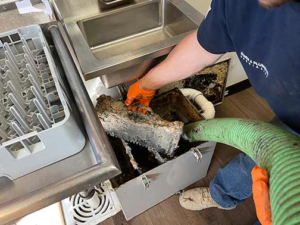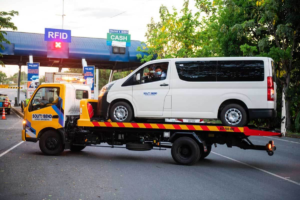Castle Rock Plumbing is no longer just about pipes and leaks. This essential system has quietly transformed with time. New techniques and materials continue to redefine it. What was once rigid is now flexible and smart.

Today’s plumbing integrates digital technology in surprising ways. Sensors can detect moisture before leaks grow. Automated shut-off valves help prevent costly damages. These tools improve efficiency and peace of mind.
The rise of green plumbing has also changed design priorities. Water-saving fixtures are now standard choices. Low-flow systems cut usage without sacrificing pressure. Plumbing has become more eco-conscious and user-centric.
Materials used in plumbing have seen a quiet revolution. Flexible polymers now replace heavy metals in piping. These are lighter, easier to install, and more durable. Corrosion and rust are becoming things of the past.
Pressure-balanced valves are now common in residential builds. They maintain steady temperatures in showers and taps. This small change has reduced scalding risks dramatically. Safety and comfort are now intertwined in design.
Underfloor heating has added new complexity to plumbing systems. These systems circulate warm water through tubing. They create even, energy-efficient warmth in cold spaces. Plumbing now plays a role in modern climate control.
Greywater systems are being used in more properties. These reuse water from showers and sinks. It’s then filtered and reused for irrigation or flushing. This process saves thousands of liters each year.
Vacuum plumbing systems are also gaining attention. These move waste using air pressure, not gravity. This is useful in challenging building layouts. It’s efficient and requires less piping infrastructure.
The concept of smart homes extends into plumbing now. Faucets can be voice-controlled and programmed. Leak detectors send alerts directly to your phone. Plumbing is now a part of the digital home network.
Tiny homes and mobile living demand plumbing creativity. Compact systems must be light, efficient, and portable. Modular plumbing panels solve these new needs. Space-saving designs now inspire permanent dwellings too.
Modern construction favors prefab plumbing assemblies. These are built off-site then installed as one unit. It speeds up construction and reduces installation errors. Consistency and accuracy are now easier to achieve.
Innovative drain systems are changing how water flows. Hidden, linear, and wall-integrated drains are trending. They offer sleek designs and improve water management. Functionality now coexists with minimal aesthetics.
Water quality management is no longer just filtration. Plumbing can now integrate real-time water testing. Systems monitor pH, mineral content, and contaminants. Homeowners can take action before problems arise.
Smart toilets are also part of this evolution. They come with bidets, dryers, and deodorizers. Sensors adapt water flow based on user behavior. Plumbing now directly interacts with the user’s needs.
The rise of off-grid living creates unique challenges. Systems must manage limited water access independently. Solar-powered pumps and composting toilets help. Plumbing is adapting to a resource-conscious lifestyle.
Noise reduction has become a bigger focus in piping. New insulation and pipe materials reduce vibrations. This is especially important in urban apartments. Quiet plumbing enhances quality of living spaces.
Backflow prevention systems are becoming more advanced. They stop dirty water from contaminating clean supply. These systems are now self-checking and self-cleaning. Plumbing reliability has reached new heights.
Recyclable and biodegradable piping is under exploration. These promise to reduce long-term environmental impact. When replaced, they won’t linger in landfills. Sustainable innovation is now influencing core components.
Training in plumbing now includes digital literacy. Plumbers must understand smart systems and diagnostics. Software-based maintenance is part of their toolkit. The role is expanding into tech-support territory.
Stormwater capture systems are merging with home plumbing. These store rain for future non-potable uses. Plumbing now plays a role in water conservation. This is essential in areas with unpredictable climates.
Even pipe layout design is changing in new builds. Loop layouts improve pressure and balance better. They also allow for future system expansions easily. Thoughtful planning leads to long-term flexibility.
Heat recovery systems are being added to drains. They capture warmth from shower and sink water. This reduces energy costs significantly over time. Plumbing now aids in energy conservation.
Remote maintenance diagnostics are gaining traction. Technicians can analyze system issues before a visit. This cuts down response time and unnecessary disruption. Predictive care replaces emergency fixes.
Multi-use fixtures are being favored in small homes. A single fixture may serve both shower and tub. Compact and convertible designs support smaller spaces. Plumbing now blends with adaptive architecture.
Disinfection features are being added into fixtures. UV lights and ozone release mechanisms are built in. These kill bacteria in water directly from the tap. Plumbing now supports health in new ways.
High-rise buildings use advanced pressure management now. Each level must maintain consistent flow. Booster pumps and regulators are automated and synced. Plumbing meets the demands of vertical living.
As water becomes a more precious resource, design evolves. Smart meters give homeowners daily usage insights. This transparency changes consumption behaviors. Plumbing becomes part of water stewardship.
Even outdoor plumbing has adapted to modern needs. Irrigation systems respond to soil sensors and forecasts. Pools auto-balance chemicals through smart valves. External systems are just as advanced as indoors.
Rehabilitation of old systems is now more efficient. Trenchless pipe replacement avoids major excavation. Liners coat the interior and restore flow. Historic buildings can now be upgraded with minimal damage.
Modular water storage tanks are used in disaster readiness. These connect to main plumbing but function off-grid. Plumbing plays a role in emergency preparedness now. Resilience is built into design.
Cultural shifts also influence fixture designs and usage. Touchless and foot-operated faucets are now mainstream. These support hygiene and accessibility needs. Plumbing reacts to evolving societal values.
Builders now pre-program plumbing features via apps. Before moving in, systems can be customized remotely. Schedules for water use can be preset. Home plumbing is now personalized from day one.
In colder climates, pipe freezing is a constant risk. Heat tape and self-regulating insulation now help. These respond to outside temperatures automatically. Plumbing fights the elements to ensure consistency.
There is growing interest in acoustic leak detection. Specialized sound waves identify underground issues. These are faster and more precise than visual checks. Plumbing inspections now rely on listening tech.
Water softening is becoming a built-in function. Instead of separate units, it’s embedded in mainlines. Scale and buildup are prevented at the source. Plumbing supports long-term system health proactively.
Hybrid systems combine both traditional and new methods. Gravity-fed with pressurized segments create efficiency. These adapt to older homes without full overhauls. Plumbing bridges old world and new design.
There is also movement toward universal design principles. Fixtures are made for all ages and abilities. Handle placement, spout height, and pressure are considered. Plumbing becomes more inclusive and mindful.
Custom soundproof bathrooms are part of new luxury trends. Drain and pipe acoustics are specially engineered. Flow is silent even at high usage times. Plumbing can contribute to quiet luxury experiences.
As climate patterns shift, plumbing must adapt faster. Drought-resistant systems and surge controls are in demand. Pipes must handle both scarcity and overflow. Plumbing is on the frontline of environmental response.
Even water heating is undergoing a transformation. Tankless systems now dominate residential choices. These heat only what’s needed, cutting down energy use. Plumbing becomes a partner in sustainability.
The plumbing industry is also exploring AI integration. AI monitors usage patterns and predicts failures. This allows for tailored recommendations and upgrades. Plumbing maintenance is becoming intelligent.
Recycled water loops are used in commercial buildings. They route filtered wastewater back for non-drink use. This reduces strain on supply infrastructure. Plumbing plays a bigger role in resource management.
Flexible installation kits are supporting DIY trends. Homeowners can now manage basic setups alone. Snap-fit connectors simplify previously complex tasks. Plumbing is becoming more approachable to users.
As cities grow denser, vertical plumbing innovations rise. Waste and water move efficiently across dozens of floors. Smart pumps and real-time flow adjustments ensure balance. Plumbing aligns with modern architecture.
Everyday awareness about plumbing is also increasing. Leaks are treated as urgent, not minor annoyances. Public campaigns highlight water waste prevention. Plumbing is no longer invisible in people’s lives.
The future holds promise for even more invisible systems. Plumbing that’s hidden yet powerful and efficient. A quiet backbone for modern living. Plumbing, once basic, is now anything but ordinary.





